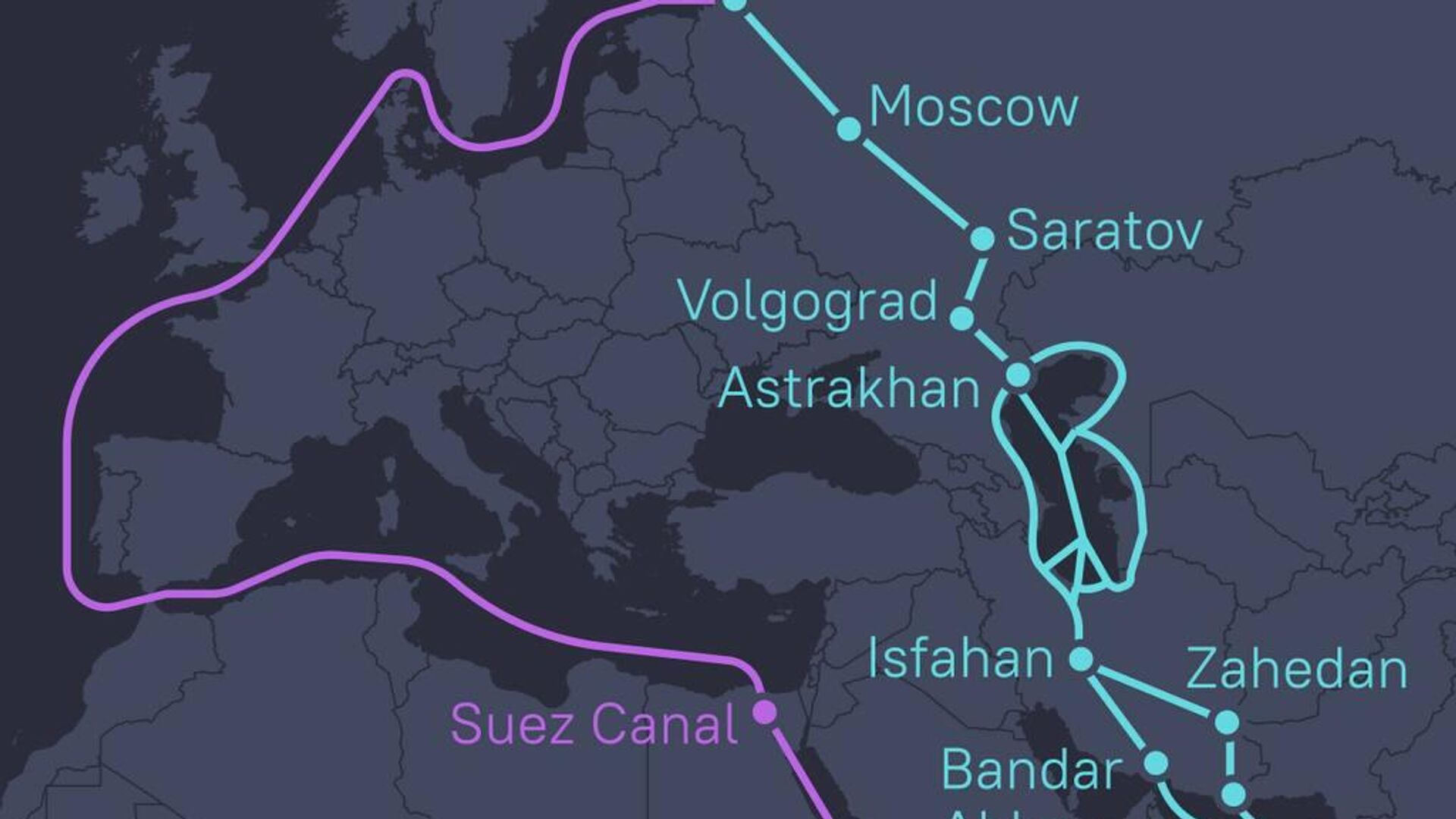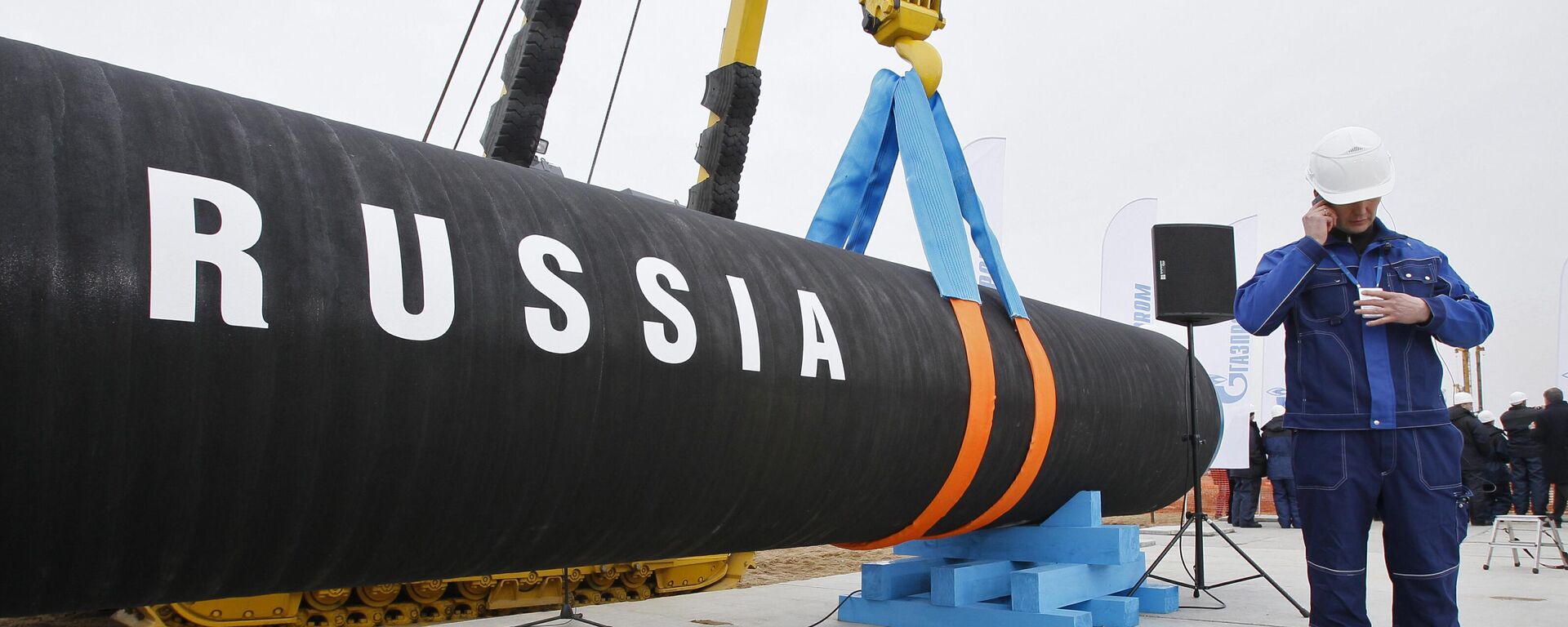https://sputniknews.in/20250225/instc-reduces-india-russia-trade-cost-by-56-rzd-8809783.html
INSTC Reduces India-Russia Trade Cost by 56%: RZD
INSTC Reduces India-Russia Trade Cost by 56%: RZD
Sputnik India
Bilateral trade between India and Russia went past the $66 billion mark in 2024 and is expected to touch $100 billion in the coming years. 25.02.2025, Sputnik India
2025-02-25T12:57+0530
2025-02-25T12:57+0530
2025-02-25T12:57+0530
indo-russian relations
india
russia
europe
international north-south transport corridor (instc)
trade corridor
trade
trade in national currencies
rupee-rouble trade
chennai
https://cdn1.img.sputniknews.in/img/07e8/01/11/6239483_0:353:1024:929_1920x0_80_0_0_d8cd2dd6bd019b4282bc82b71405b0eb.jpg
Cargo volumes between India and Russia through the International North-South Transport Corridor (INSTC) have increased by 1.7 percent following a 56 percent drop in the transportation cost via the route, a Russian official has said.In 2024, trade turnover between Russia and India through the INSTC demonstrated positive growth, he added.Many categories of cargo were transported along this route for the first time. For example, in May 2024, a full train of "Agroexpress" was dispatched from the Southern Urals to India. A total of 31 twenty-foot containers carrying oat flakes and grains were shipped to Mundra Port, Kryukov revealed.Today, the main categories of goods transported via the INSTC include:Kryukov thinks that the growth prospects for trade between Russia and India via the North-South Corridor in 2025 look promising. After all, in 2024, the total bilateral trade volume reached $66 billion, and both countries aim to increase this figure to $100 billion by 2030.To achieve these goals, it is crucial to ensure the smooth organization of rail and multimodal container transportation between Europe, Asia, and the Middle East, where the INSTC plays a key role. The RZD Holding and RZD Logistics are making significant efforts in this direction, as evidenced by growing transportation volumes and reduced delivery times, he asserted.However, for the further and more productive development of the corridor, several key issues must be addressed:
https://sputniknews.in/20250210/india-open-to-long-term-energy-deals-with-russia-petroleum-minister-8754775.html
india
russia
europe
chennai
Sputnik India
feedback.hindi@sputniknews.com
+74956456601
MIA „Rossiya Segodnya“
2025
Pawan Atri
https://cdn1.img.sputniknews.in/img/07e6/0c/13/139630_147:0:831:684_100x100_80_0_0_8fa2b25903e7787fe6a2698552c167df.png
Pawan Atri
https://cdn1.img.sputniknews.in/img/07e6/0c/13/139630_147:0:831:684_100x100_80_0_0_8fa2b25903e7787fe6a2698552c167df.png
News
en_IN
Sputnik India
feedback.hindi@sputniknews.com
+74956456601
MIA „Rossiya Segodnya“
Sputnik India
feedback.hindi@sputniknews.com
+74956456601
MIA „Rossiya Segodnya“
Pawan Atri
https://cdn1.img.sputniknews.in/img/07e6/0c/13/139630_147:0:831:684_100x100_80_0_0_8fa2b25903e7787fe6a2698552c167df.png
india, russia, europe, international north-south transport corridor (instc), trade corridor, trade, trade in national currencies, rupee-rouble trade, chennai, chennai–vladivostok maritime corridor
india, russia, europe, international north-south transport corridor (instc), trade corridor, trade, trade in national currencies, rupee-rouble trade, chennai, chennai–vladivostok maritime corridor
INSTC Reduces India-Russia Trade Cost by 56%: RZD
Bilateral trade between India and Russia went past the $66 billion mark in 2024 and is expected to touch $100 billion in the coming years.
Cargo volumes between India and Russia through the International North-South Transport Corridor (INSTC) have increased by 1.7 percent following a 56 percent drop in the transportation cost via the route, a Russian official has said.
"The positive trade dynamics are driven by India's ambition to increase exports to Russia via the INSTC. Additionally, a cost reduction of more than 56% for transportation services on this route has led to a 1.7-fold increase in cargo volumes," Dmitry Kryukov, the Deputy General Director for multimodal service at JSC RZD Logistics, told Sputnik India.
In 2024, trade turnover between Russia and India through the INSTC demonstrated positive growth, he added.
Many categories of cargo were transported along this route for the first time. For example, in May 2024, a full train of
"Agroexpress" was dispatched from the
Southern Urals to India. A total of 31 twenty-foot containers
carrying oat flakes and grains were shipped to
Mundra Port, Kryukov revealed.
Today, the main categories of goods transported via the INSTC include:
Imports to Russia: Building materials, clothing and footwear, rice, plastics, confectionery products, spices, and food concentrates.
Exports to India: Pulp and paper products, lumber, hygiene products, furniture, roofing materials, and food products.
"Regarding trade flows specifically with the Republic of India, the predominant export categories are paper products, metals, and food products, while the main imported goods include construction materials, reinforcement bars, pyrolysis oil, and ferrous metal products," the logistics firm's Deputy Director General highlighted.
Kryukov thinks that the growth prospects for trade between Russia and India via the North-South Corridor in 2025 look promising. After all, in 2024, the total bilateral trade volume reached $66 billion, and both countries aim to increase this figure to $100 billion by 2030.
To achieve these goals, it is crucial to ensure the smooth organization of rail and multimodal container transportation between
Europe, Asia, and the Middle East, where the INSTC plays a key role. The
RZD Holding and RZD Logistics are making significant
efforts in this direction, as evidenced by growing transportation volumes and reduced delivery times, he asserted.
However, for the further and more productive development of the corridor, several key issues must be addressed:
1.
Infrastructure development: Construction of missing railway segments, such as Rasht-Astara, and elimination of bottlenecks in port infrastructure.
2.
Simplification of procedures: Optimization of customs and phytosanitary controls, as well as the implementation of seamless digital document exchange.
3.
Financial challenges: Overcoming sanctions-related pressure and complications in international settlements.
4.
Market awareness: Increasing awareness among potential cargo shippers about the capabilities and services of the North-South Corridor.
"By addressing these issues, the INSTC can continue to grow as a strategic trade route, further strengthening economic ties between Russia and India," Kryukov concluded.



